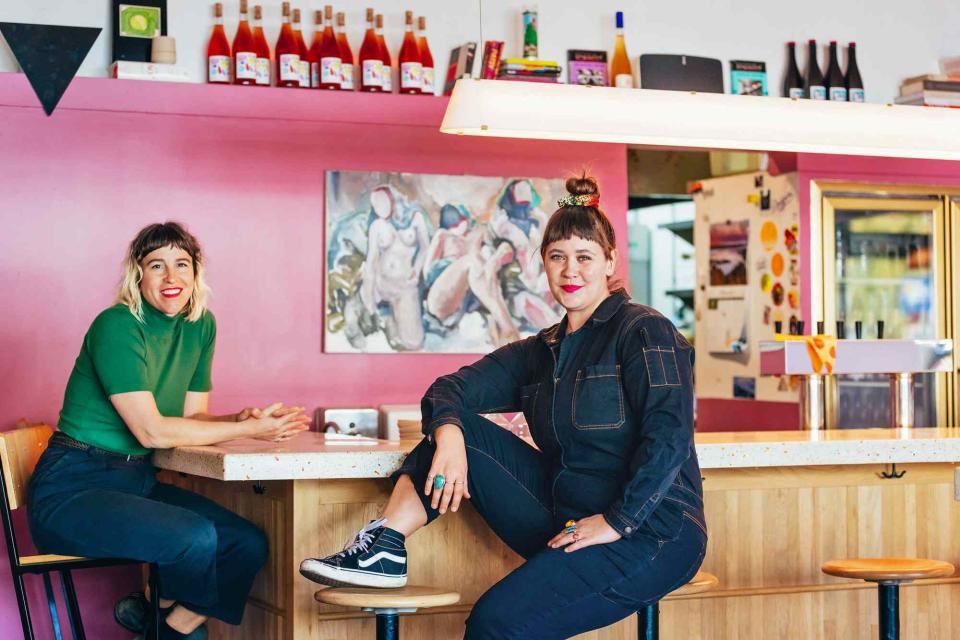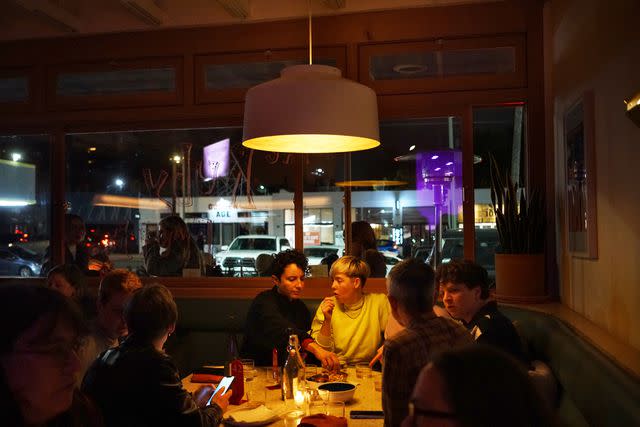These Tech Tools and Apps Are Making LGBTQ Travel Easier and Better
For many who identify as LGBTQ, travel is a way to build community. These days, technology is making that easier than ever.

Jesse Saler/Courtesy of The Ruby Fruit
Emily Bielagus (left) and Mara Herbkersman at the Ruby Fruit.The long history of the LGBTQ experience is wrapped up in the search for community havens, places of shared experience and safety — venues where queer people, like me, can be fully authentic.
“It’s in our DNA to seek out others like ourselves,” agrees Ed Salvato, a professor at New York University who specializes in tourism. “What can often connect people instantly across cultures, across a linguistic or religious barrier, is the fact that we’re queer,” he says.

Anastasia LaFond/Courtesy of The Ruby Fruit
The evening scene at the Ruby Fruit.Despite massive strides toward inclusivity in recent years, the need for physical spaces just for LGBTQ people remains critical. A recent Booking.com survey, for example, revealed that 74 percent of trans-identifying travelers say they consider some destinations off-limits from a safety perspective.
“When traveling, it’s vital to have a safe space for all marginalized genders within the queer community,” observes Erica Rose, a writer/director and co-creator of The Lesbian Bar Project, a TV documentary series on Roku. The show, which Rose developed with director Elina Street, spotlights the couple dozen lesbian bars remaining in the U.S. — a handful compared with the hundreds that existed decades ago. In fact, bars across the queer spectrum are in jeopardy of shuttering. Between 2002 and 2019, according to one academic study, LGBTQ bar listings across the U.S. declined by 41 percent.
But while IRL venues may be on the decline, a digital ecosystem of LGBTQ apps is flourishing. Grindr is probably the best known among the broader public, thanks in part to its (not entirely undeserved) association with hookup culture. Other identity-driven apps, such as Her and Lex, are key tools in how LGBTQ people see and explore the world.
Many users of Lex, for example, log on to ask others about the latest cultural or queer happenings in a particular city, or to search for recommendations. “People can connect online before connecting in person,” explains Austin Konkle, the app’s head of growth marketing. “That’s true even if no physical spaces that reflect their identity exist in the destination.”
Grindr has become my go-to travel app, and the welcome messages pour in whenever I change my profile to “visiting.” Over the years, I’ve gotten tips on where to stay in Baja California, Mexico, and restaurant recommendations in Bogotá, Colombia, to give just two examples.
Grindr recently announced it would add a new feature, Roam, giving users "the option to select a new location in which to place their profile for up to one hour, enabling them to connect and engage with local users before a trip," according to a statement from the company.
For Mara Herbkersman and Emily Bielagus, the co-owners of the Ruby Fruit, a Los Angeles wine bar for lesbians, nonbinary, gender-nonconforming, and trans folx, having both digital and real-life spaces is important. “While being online is wonderful for its accessibility, we also need human interaction,” Herbkersman says. “We can’t just exist online; no one can.”
A version of this story first appeared in the June 2024 issue of Travel + Leisure under the headline "Finding Your People."
For more Travel & Leisure news, make sure to sign up for our newsletter!
Read the original article on Travel & Leisure.

